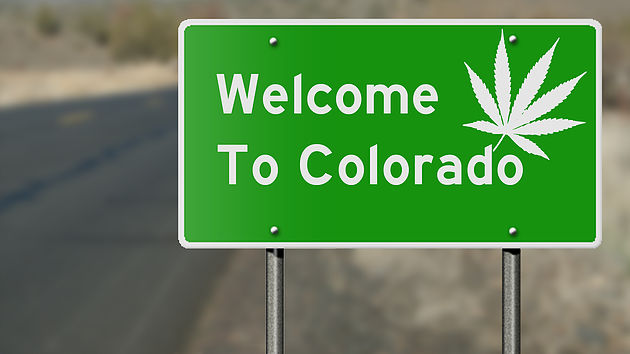Eyes Wide Open: What Entrepreneurs in the New Recreational Marijuana States Can Learn From Colorado’s Marijuana Industry
he approval of ballot initiatives legalizing recreational marijuana in California, Maine, Massachusetts and Nevada has elicited a level of jubilation that continues to run high, despite the disappointment by many with the outcome of the presidential election. The legalization of recreational marijuana in California, which has the world’s sixth-largest economy, is seen by many as a watershed event in the global legalization and decriminalization of cannabis.
This new recreational marijuana industry in these four states creates tremendous business opportunities for existing participants already operating medical marijuana businesses. It also provides an opening for thousands of entrepreneurs and a profusion of new investors. But, there are challenges. Some of these challenges are similar to those faced by most start-up or early-stage businesses in other industries. Other challenges are more specific to the marijuana industry.
First and foremost, to my knowledge, state-licensed marijuana businesses are technically illegal under federal law. It is also an industry that has regulations that vary widely in the various marijuana legal states.
The recent emergence of America’s marijuana industry has many parallels to the path that recent dot-com and e-commerce businesses start-ups followed. Initially, there were huge surges in both of these new industries. This new state-licensed marijuana industry is analogous to this past dot-com and e-commerce boom.
There is no question in my mind that recreational marijuana will become a major industry in America. One need only look at Colorado, the first state where the sale of recreational marijuana was legal. Colorado generated revenues last year slightly under $1 billion. Through September of this year, Colorado’s marijuana stores generated $947 million in nine months, close to the total of $996 million of revenues for all of last year. This year, Colorado’s marijuana revenues will easily exceed $1.2 billion.
Colorado, with a population of almost 3.5 million is dwarfed by California’s population of nearly 39 million. Since California’s population is ten times that of Colorado, it’s not unreasonable to assume that California’s legal marijuana industry will, within a few years, exceed $12 billion in annual revenues.
The Washington Post stated that Colorado’s marijuana industry added 18,000 new jobs last year. With ten times Colorado’s population, California could add close to 180,000 new jobs annually in that state’s new industry. Estimates indicate that Colorado’s marijuana business employs around 30,000 people. It is, therefore, reasonable to speculate that this business could generate approximately 300,000 new business positions in California.
Job growth is a contributor to economic growth. California, Massachusetts, Nevada, and Maine are currently positioned to add new jobs in this new industry which will ultimately contribute to each of the state’s economic growth.
My experiences as an owner of recreational marijuana stores and a cultivation facility in Colorado dating from January 1, 2014, was documented in an eight-part CNN reality series, “High Profits” which aired in April 2015. The television series highlighted some of the challenges and problems that Colorado recreational marijuana businesses faced.
It is this experience that provides me with a slightly different perspective than someone who is new to the industry. Although I remain bullish on the prospects of the recreational marijuana industry in the four new recreational marijuana states, there are caveats to keep in mind.
Most importantly, entrepreneurs and investors seeking to get involved in the recreational industry should take a deep breath and slow down before plunging ahead into what conservatively could be described at best, as a “challenging” emerging market.
Reviewing the Colorado experience is helpful in anticipating what individuals in these new recreational marijuana states will likely encounter.
A Crowded, But Still Growing Industry
It’s clear that Colorado has too many marijuana businesses. As of November 1st, as reported by the state’s Marijuana Enforcement Division, Colorado’s medical marijuana industry consisted of 528 dispensaries, 790 cultivation facilities, 248 infused product manufacturers, and 14 testing facilities, a total of 1580 medical marijuana businesses.
Colorado also reported 454 retail stores, 613 cultivation facilities, 231 product manufacturers, and 14 testing facilities, a total of 1312 recreational marijuana businesses.
When one adds the number of Colorado’s medical and recreational marijuana businesses together, it totals almost 2900 businesses, certainly too many for a state with a relatively small population of 5.4 million people. These 2900 marijuana businesses include some that have both medical and recreational licenses, and integrated operations, with growing, processing and retail sales owned by the same group.
This large number of marijuana businesses has significantly contributed to the competitive challenges of operating profitably. It is truly a matter of the “survival of the fittest” or who has the deepest pockets.
An unknown in each of the new recreational marijuana states is the number of marijuana businesses that ultimately will become licensed. Will the states end up with too many marijuana businesses, or will the state regulations severely limit the number of licensees and as a result the level of competition? These are factors that both entrepreneurs and investors should consider when looking at opportunities in the state-licensed marijuana industry.
Taxation Issues
Adding to the challenges facing marijuana businesses in Colorado are Internal Revenue Services (IRS) regulations, specifically Code Section 280E. While 280E has become an industry buzzword, there is frequent confusion about how it is applied. 280E was passed by Congress in 1982 in response to a case where the Tax Court ruled that a taxpayer could deduct business expenses related to the sales of amphetamine, cocaine, and marijuana.
280E is a single, but long sentence of the Internal Revenue Code, “No deduction or credit shall be allowed for any amount paid or incurred during the taxable year in carrying on any trade or business if such trade or business (or the activities which comprise such trade or business) consists of trafficking in controlled substances (within the meaning of schedule I and II of the Controlled Substances Act) which is prohibited by Federal law or the law of any State in which such trade or business is conducted.”
Because marijuana is a Schedule I controlled substance under the Controlled Substances Act, the IRS has taken the position that marijuana dispensaries and retail stores can not deduct their “ordinary and necessary” business expenses. Only the cost of goods sold may be deducted. Salaries, rent, utilities and other expenses such as security or advertising may not be deducted.
I am aware of no business in the United States that can operate profitably if it is prohibited from deducting “ordinary and necessary” business expenses. While the maximum U.S. corporate tax rate is 35%, I have heard estimates of actual tax rates for Colorado’s medical marijuana dispensaries and retail marijuana stores ranging from 70% to 90%.
Because 280E allows marijuana retailers and dispensaries to deduct their cost of goods sold, many operators of “integrated marijuana businesses,” those that include grow facilities and retail stores and dispensaries in the same ownership group, have been aggressive in what they include in their cost of goods sold.
In January 2015, the IRS issued its Memo 201504011 which clarified which type of costs and expenses that could be included in the cost of goods sold.
The actual reported number of I.R.S. audits in the State of Colorado varies from a few dozen to over 150 making it difficult to gauge the true level of federal involvement.
Based on what I’ve learned regarding the IRS audits in Colorado, It appears that the IRS is taking the position that the cost of goods sold can only include direct costs of production. These include the direct labor for growing or trimming and the portion of the rent and utilities attributable to the square footage used for growing. The IRS is also apparently taking the position that no managerial or corporate overhead may be included in the cost of goods sold.
This apparent IRS position is devastating to Colorado’s marijuana businesses. The bottom line, under 280E, corporate and managerial expenses, may not be deducted on the retail or dispensary side of the business, and with the IRS position regarding the cost of goods sold, these expenses can not be deducted on the grow side either. This results in managerial and administrative costs having to be paid from after-tax dollars, another challenge to operating profitably.
Supply, Demand, and Pricing
Industry colleagues in Colorado have shared with me their thoughts that probably every marijuana store and dispensary in Colorado is for sale! Obviously, this is an exaggeration, but there is some truth in it.
Perhaps the biggest issue in Colorado’s marijuana industry are three words that are familiar to anyone who has taken Economy 101 in college. They are supply, demand, and pricing. Right now there is a tremendous oversupply of legal marijuana in Colorado.
The retail demand for both medical and recreational marijuana are growing at a fast rate, while the supply of marijuana has been growing at a faster rate. This oversupply has been beneficial for consumers and patients, but it’s been devastating for the bottom-line of marijuana businesses in Colorado.
In Colorado, it’s common to see specials advertised or receive emails offering marijuana flower at $100 per ounce. It is highly unlikely that growers, dispensaries or retail stores can operate profitably with marijuana selling at these historically low prices.
While budtenders seek to upsell their Colorado customers to their “top shelf,” silver, gold or platinum flower, flower in Colorado is increasingly becoming a commodity. The low price of flower has motivated many growers, processors, and retailers to develop higher margins product, including concentrates, prerolls, tinctures and edibles as a way to survive.
Conclusion
The potential for the recreational marijuana industry in California, Maine, Massachusetts, and Nevada growing into a huge industry is a given. It would be prudent for marijuana entrepreneurs and investors to study and learn what has worked and more importantly, not worked in Colorado. There are fortunes to be made, but based on my view and experiences, there are greater fortunes that will likely be lost.
Author: Jeffrey Friedland (www.jeffreyfriedland.com, jeffrey@jeffreyfriedland.com, Tel. 1-646-450-8909.) His book, “Marijuana: The World’s Most Misunderstood Plant” is available at Amazon in print and Kindle editions.
Mr. Friedland is CEO of INTIVA Inc., director of CannRx, a founder of Israel Plant Sciences, and has other business interests and investments in the cannabis industry in the United States, Canada and Israel.




